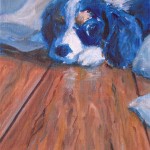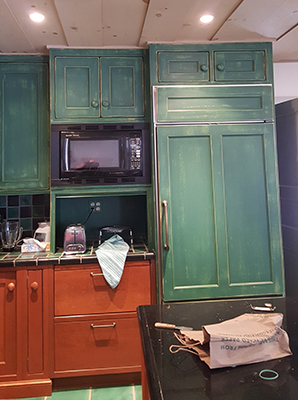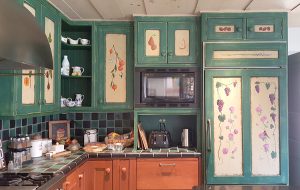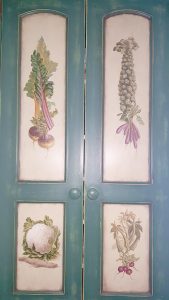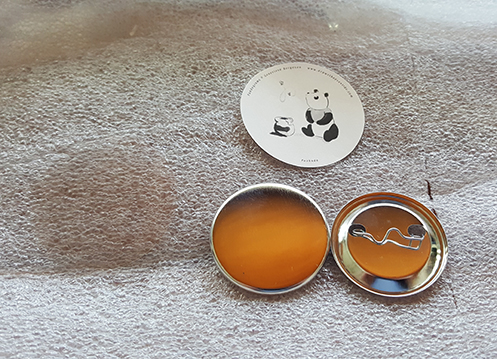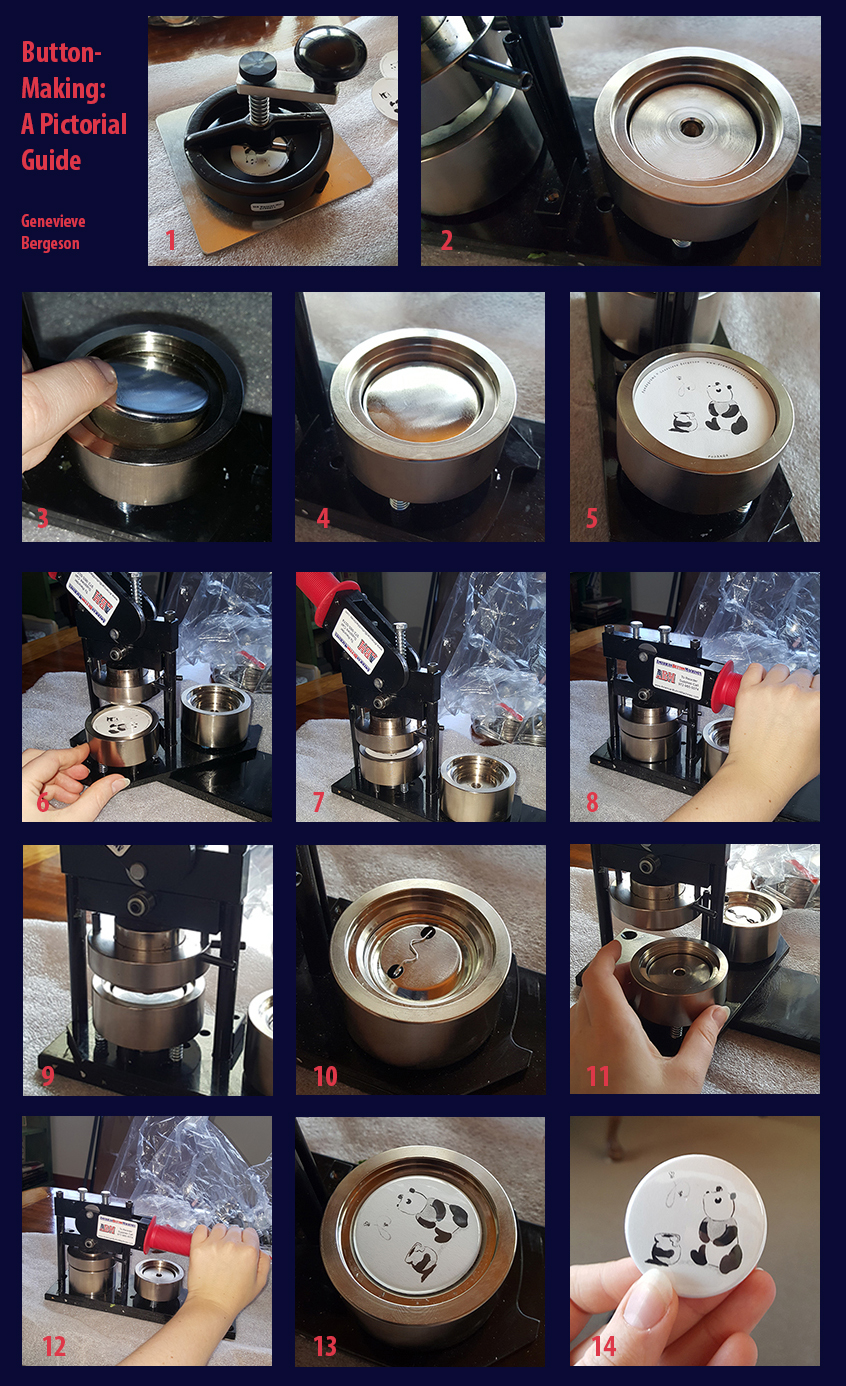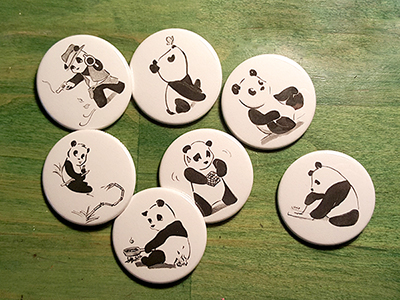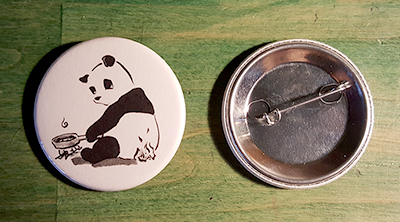The first step to take these cabinets from solid green to simply gorgeous was to paint a base color on the inset panels. Arguably that’s actually the third step–the first being to pull a selection of paint chips from a hardware store and the second to compare them with the background on the vegetable panels already there. I chose a neutral, yellow-toned interior flat paint. (I used a single sample size from Home Depot.) There was no need to sand or prime. I just grabbed a wide brush and started painting.
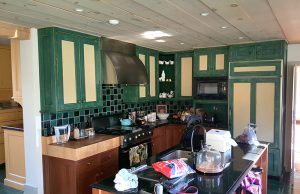
It took 4 to 5 hours to paint all the cabinet panels. The cabinets in the above photo (click to enlarge) were painted in the same day (Jan. 20). The following week, it was decided that we should also paint the two little panels above the fridge (above the long horizontal panel on the right). With the exception of one panel, these have only 1 coat of the yellow paint. I did a side-by-side comparison–1 panel with 2 coats & its neighbor with 1 coat–and, really, 2 coats of paint did not contribute anything to the look. In fact, letting a little green show through (1 coat) contributed to the rustic look.
After the yellow base coat dried, I set about to age the paintings. I experimented with this on 1 panel before leaving for the day (Jan. 20, the base coat day), knowing that I wanted to have a plan ready for the following weekend when I returned to age all the panels.

The above effect was achieved with a simple mix of acrylic pigments, mainly burnt umber (with dashes of white, black, and a light beige neutral called “unbleached titanium,”) with varying amounts of water for different transparencies of color. The darkest areas had little to no water & the lightest, smudgiest areas the most. Ultimately I stopped using the white & the unbleached titanium and stuck with the umber. The technique? A mix of dabbling, dry brush, and smearing with a rag. Satisfied with the look, I set out until the next Saturday (Jan. 27). Marissa joined me at that time, and it took us about 4 hours to age the rest of the panels. (That’s 8 hours between the two of us!)
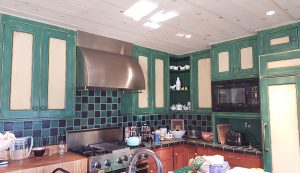
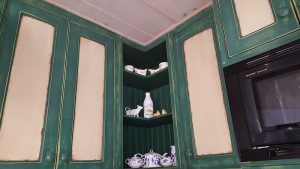
Ta da! The kitchen already looks lighter.

